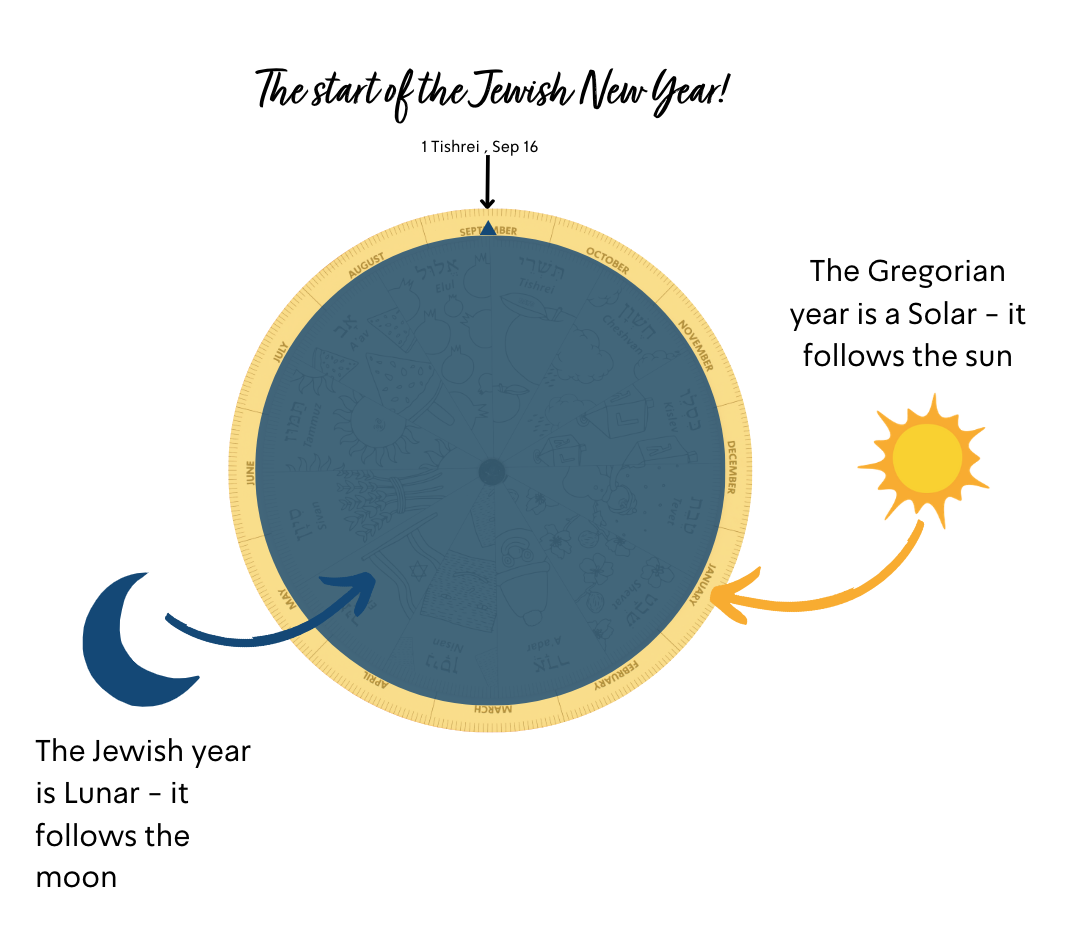Wheel of the Year
Download this PDF activity page to complete your Jewish Wheel of the Year experience. It includes 2 easy steps + 1 advanced concept. You can also read the content below.
On Rosh Hashanah, we celebrate the start of a new year. During this time, we are reminded that the Jewish year and the Gregorian calendar are not synchronized. Use the Wheel of the Year to align both calendars and explore.
1- Mark Sep 16th, as the start of the New Jewish Year
Rosh Hashanah doesn't fall on the same day of the Gregorian calendar every year due to the differences between the lunar-based Jewish calendar and the solar-based Gregorian one.
Move the notch to September 16th to mark the starting point of the year, to synchronize or align the two calendars for this year.
2- Find three Jewish holidays and learn how they move
Locate Rosh Hashanah, Sukkot, and Hanukkah on the calendar. Last year, Hanukkah began on December 26, 2022. This year, it starts on December 7, 2023. Can you understand why Hanukkah falls on a different date each year?
As the Jewish year varies annually, its holidays also shift accordingly.
3 - Where's Passover? (ADVANCED)
Passover is traditionally observed in the middle of the Jewish month of Nisan. Typically, we'd anticipate it starting in March, but this year, it doesn't commence until April 22nd. Did the Jewish year get an extra month?
The Jewish calendar aligns both with the moon's cycles and the solar year. To prevent the lunar months from deviating too much from the solar year, an additional month (Adar) is added 7 times every 19 years. This ensures the Jewish calendar stays consistent with the solar year.
So, this year is special—it's a leap year! An extra month of Adar has been added to realign the calendars.




